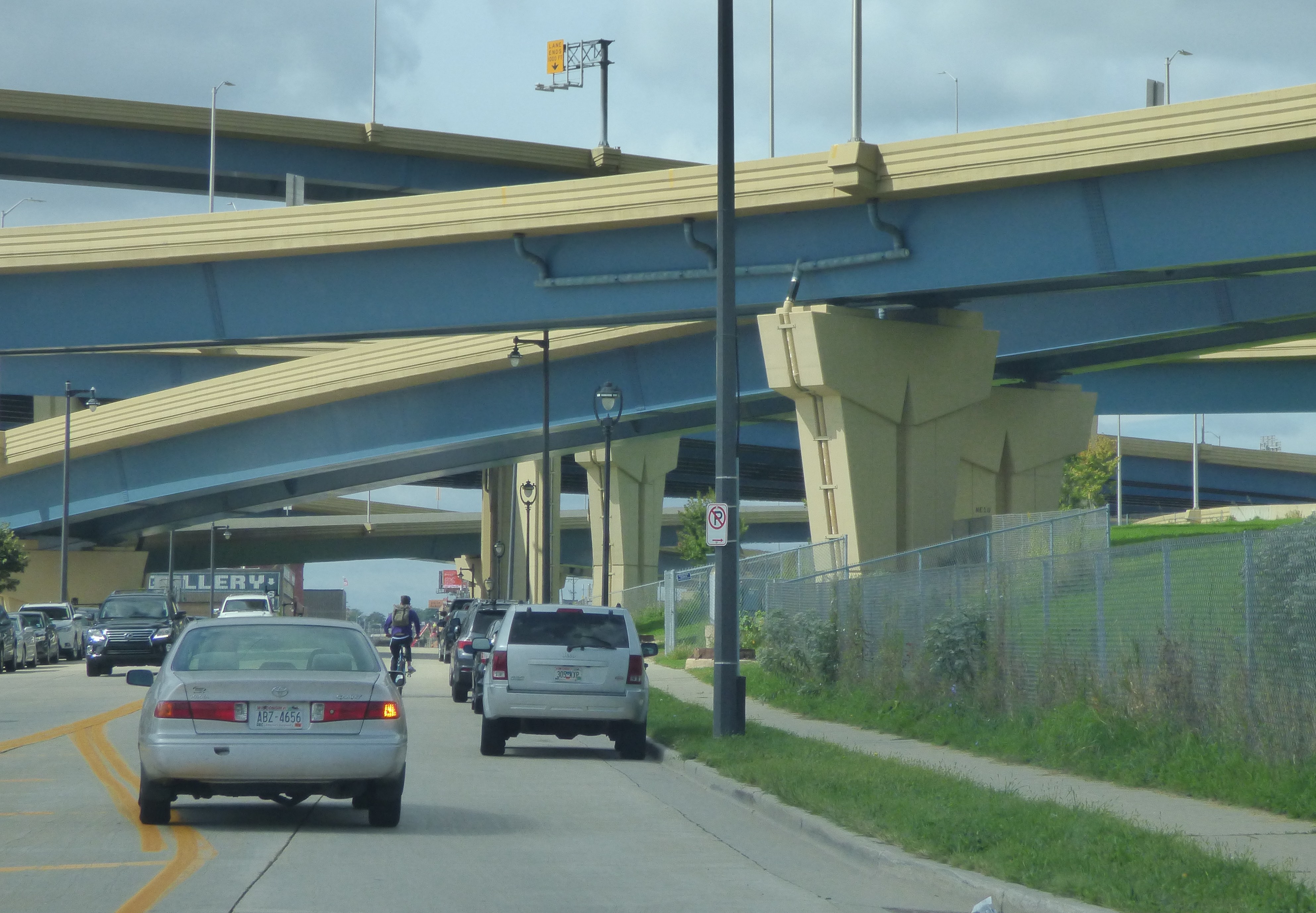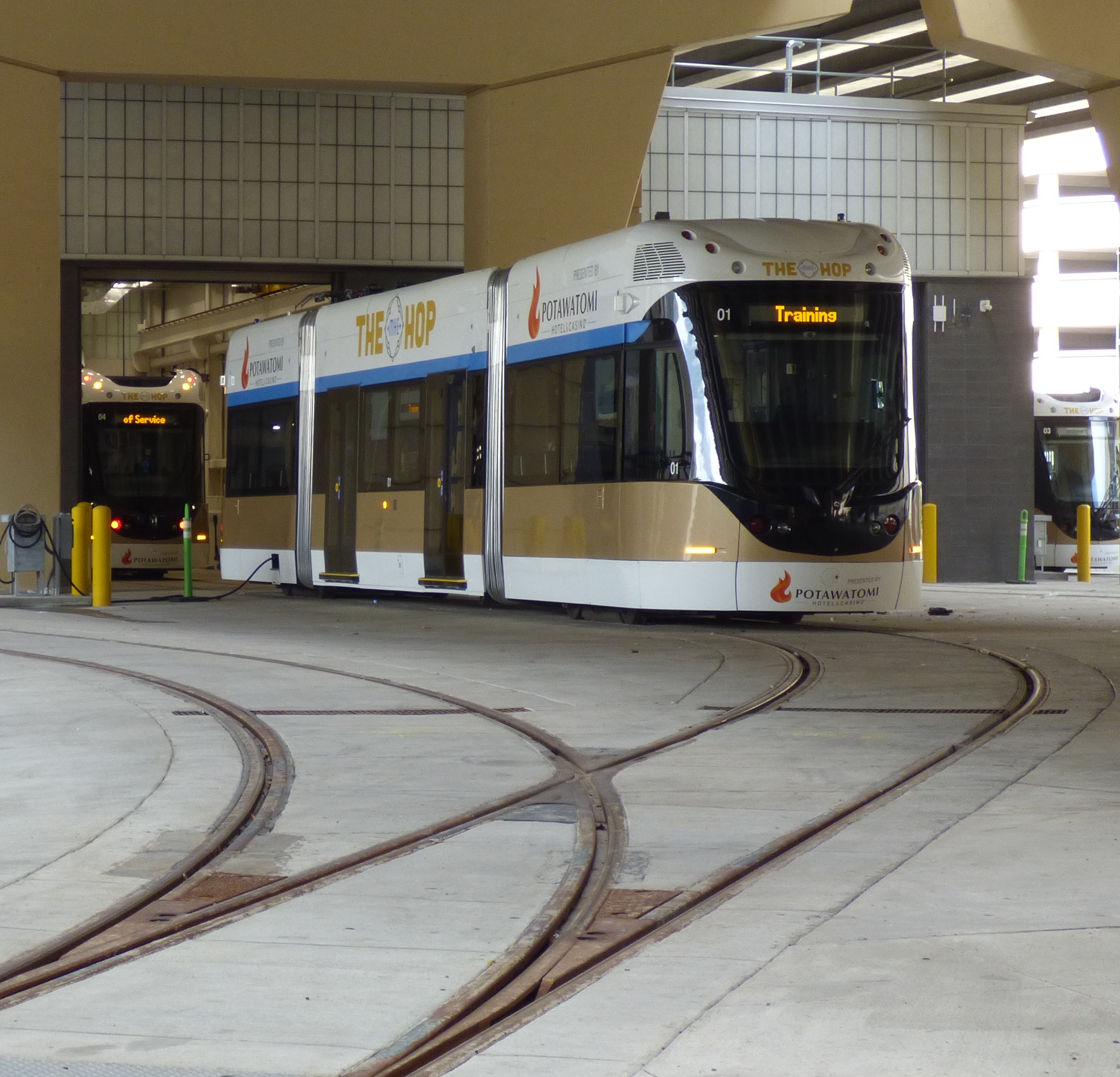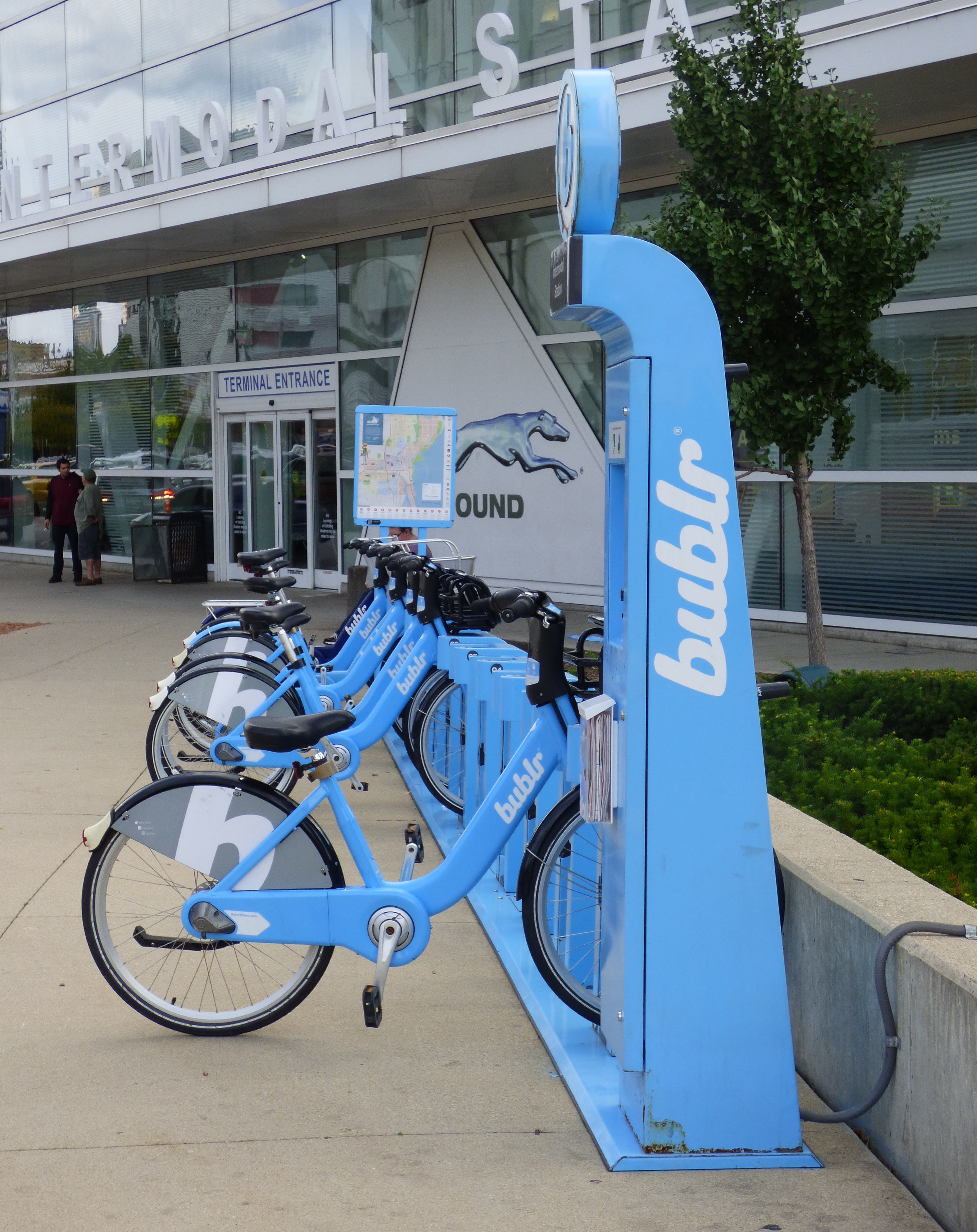Our Current Transportation System is Designed to Move Cars, Not People

It doesn’t make sense. The Wisconsin Department of Transportation (WisDOT) spends a disproportionate amount of its budget on highways at the expense of public transit, local roads, railroads, bicycle paths, sidewalks, and harbors. Nearly half of WisDOT’s $3 billion annual budget is spent on highway construction and expansion, despite the fact that highways make up only 10% of roads in Wisconsin and the fact that transit ridership has surged by 20% over the last decade in the US. Wisconsin spends nine times more money on highway construction than on public transit and rail. And each year, Wisconsin allocates less money for public transit aid.
Instead of investing in transportation that works for everyone (public transportation and local infrastructures like roads, bridges, and bicycle and pedestrian infrastructure), Wisconsin is spending billions of dollars unnecessarily on highways, increasing noise and air pollution, bisecting neighborhoods, and displacing businesses.
A New Transportation System that Works for Everyone
1) Public transit is cheaper, safer, more equitable, and better for the environment and our health for short-distance travel. People who use transit save an average of $9,242 a year by driving by car. It’s also 172 times safer, resulting in 200,000 fewer deaths, injuries, and crashes. It also can promote overall public health by increasing exercise levels and decreasing the rate of obesity. Switching from commuting by car to commuting by transit not only improves air quality but also reduces an average person's carbon footprint by as much as 4,800 pounds. And it decreases air pollution, which disproportionately affects low-income and majority-minority communities.
 Plus, public transit helps people become more mobile and improves access to transportation in general. About 20% of Wisconsin seniors don’t drive, and half of those seniors feel isolated in their home because of it — which public transit can address. And it’s not just seniors — fewer young people are driving too. About 60% of Wisconsin college students said they would be at least “somewhat more likely” to stay in Wisconsin post-graduation if they could get around without driving.
Plus, public transit helps people become more mobile and improves access to transportation in general. About 20% of Wisconsin seniors don’t drive, and half of those seniors feel isolated in their home because of it — which public transit can address. And it’s not just seniors — fewer young people are driving too. About 60% of Wisconsin college students said they would be at least “somewhat more likely” to stay in Wisconsin post-graduation if they could get around without driving.
In addition to seniors and young people, people with disabilities, who make up almost 1 in 12 Wisconsinites, may be unable to drive — which means public transit might be their only way around. People with low or fixed incomes also might not be able to afford the expensive upkeep that a car demands. And lack of transportation disproportionately affects People of Color - who are statistically less likely to have a car, a driver’s license, or both - so equitable public transit is vital to meeting the needs of all Wisconsinites.
2) High-speed rail is easier, more environmentally-friendly, and better for the economy when it comes to long-distance travel. Fully implementing passenger train service from Chicago to Madison (which Governor Walker rejected) would have added 9,570 jobs, $173 million in additional household income, and $704 million in increased property values for Wisconsin. It would have taken 500,000 cars off the road and reduced traffic, decreasing our dependence on oil and reducing our carbon dioxide emissions by 190,000 metric tons per year. While it doesn’t exist yet, pushing for high-speed rail remains a top priority.
 3) Biking and walking can drastically reduce our carbon footprints, improve our health, and decrease traffic. Maintaining high-quality walking and biking infrastructure also costs a fraction of maintaining driving infrastructure. Biking reduces the likelihood of health issues such as heart disease, stroke, hypertension, osteoporosis, obesity, and depression. It also lowers healthcare costs and improves the quality of life, while at the same time emitting no pollution. Biking can also economically boost our communities. According to UW-Madison’s Nelson Institute, bicycling contributes $1.5 billion to Wisconsin’s economy annually, including $535 million in tourism revenues. If we replaced half of the short car trips with bike trips, a Midwestern study found that “the combined benefits of improved air quality and physical fitness would exceed $8 billion a year.”
3) Biking and walking can drastically reduce our carbon footprints, improve our health, and decrease traffic. Maintaining high-quality walking and biking infrastructure also costs a fraction of maintaining driving infrastructure. Biking reduces the likelihood of health issues such as heart disease, stroke, hypertension, osteoporosis, obesity, and depression. It also lowers healthcare costs and improves the quality of life, while at the same time emitting no pollution. Biking can also economically boost our communities. According to UW-Madison’s Nelson Institute, bicycling contributes $1.5 billion to Wisconsin’s economy annually, including $535 million in tourism revenues. If we replaced half of the short car trips with bike trips, a Midwestern study found that “the combined benefits of improved air quality and physical fitness would exceed $8 billion a year.”
4) Electric vehicles generate half the carbon emissions of a gas-powered vehicle. And since they run on batteries charged by the electrical grid, they will keep getting cleaner as we generate more energy from solar and wind. They also don’t emit tailpipe exhaust — which means less ground-level air pollution. Models such as the Nissan Leaf and Chevy Volt are also becoming much more affordable and are much cheaper to maintain, especially since owners save money on gas.
We need our state and local governments to prioritize a transportation system that works for everyone.
Help us move beyond oil to clean transportation. Here’s what you can do:
1) Transit funding increases and transit expansions are needed at the federal, state, and local levels. In recent years, the state of Wisconsin has slashed transit funding to make room for out-of-control highway expansion spending. Sign our petition calling for more accessible and equitable transportation!
2) Check out the Coalition for More Responsible Transportation in Wisconsin to help us stop wasteful highway spending and expand cleaner, safer transportation options for Wisconsin.
3) Volunteer with the Sierra Club’s Transportation Team!